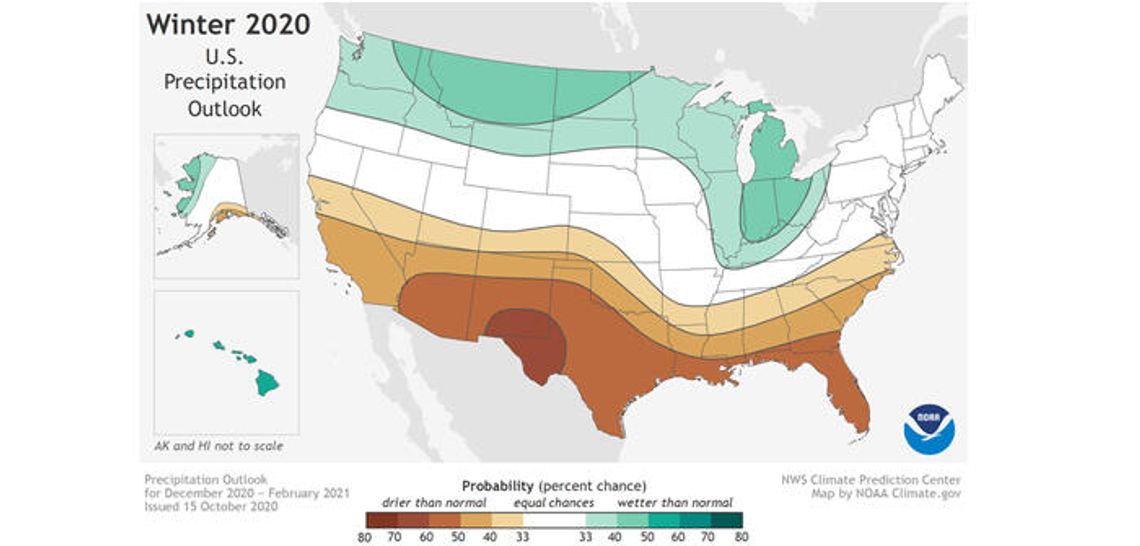Staff Report
It’s still a long-range model, but forecasters are calling for drought conditions to return to much of Texas by early next year.
The prediction is based on the developing La Niña phenomena, which occurs when sea level temperatures in the eastern equatorial Pacific are below normal.
The most recent drought map, released on Oct. 15, shows no drought in the local region, although Travis County is depicted as “abnormally dry” and portions of the Panhandle are shown to already be in “severe” stages of drought.
Forecasters at NOAA’s Climate Prediction Center — a division of the National Weather Service — are also closely monitoring persistent drought during the winter months ahead, with more than 45% of the continental U.S. now experiencing drought, the agency says in its weekly report.
Currently, large areas of drought extend over the western half of the U.S., with parts of the Northeast also experiencing drought and near-record low stream flows. With a La Niña climate pattern in place, southern parts of the U.S. may experience expanded and intensifying drought during the winter months ahead.
“With La Niña well established and expected to persist through the upcoming 2020 winter season, we anticipate the typical, cooler, wetter North, and warmer, drier South, as the most likely outcome of winter weather that the U.S. will experience this year,” said Mike Halpert, deputy director of NOAA’s Climate Prediction Center.











